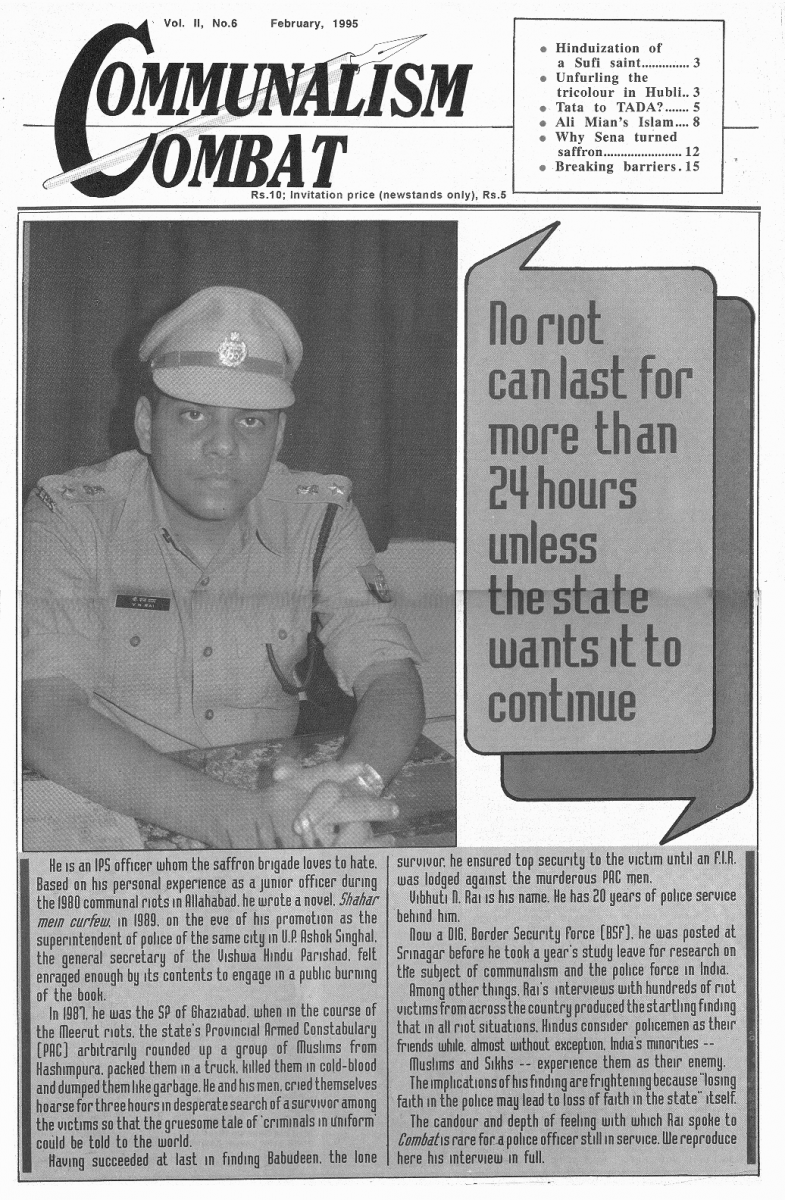
As a publication, Communalism Combat’s circulation may be low when compared to so-called mainstream newspapers and magazines but its reach and impact should not be underestimated. This is because CC has had a considerable impact on the public discourse on communalism in India, both in terms of conscientising the wider body politic about the dangers of sectarian, divisive politics, and in putting forward proposals to make our public institutions and arms of the State free from a communal or anti-people approach.
If CC has been less successful on the latter front, this is only because communal politics and violence have become an intrinsic part of the way in which our political class thrives and rules. The Bharatiya Janata Party is perhaps the most obvious example of this phenomenon but virtually every other party or formation, from the Congress to the ‘Third Front’ and Bahujan Samaj Party, is implicated in this in one way or another. The Left parties are pretty much the only exception, but their lack of political confidence leads them to tail behind parties like the Congress and take only an epiphenomenal view of the phenomenon of communalism.
Needless to say, none of the parties involved in building an anti-BJP front is particularly exercised by the ease with which state institutions can be subverted and used to foster violence. None has seriously attempted to introduce reforms that would make the executive branch, and particularly the police, accountable for all acts of omission and commission during riots. None has attempted to prosecute those involved in organising and carrying out communal massacres, whether in Delhi (1984), Meerut (1987) or Bombay (1992).
If Communalism Combat is to play an ever more pro-active, interventionist role on the subject, it must sharpen its attack on the institutional and political mechanisms within the Indian State which allow innocent citizens to be hunted down and killed in broad daylight. CC has done excellent work already – for e.g., by highlighting the need for police reform, or looking at the long-term strategic issues of pedagogy and school curricula – but there is room for a lot more.
Another front on which CC has contributed considerably is on breaking down the media discourse on communal violence. Thanks to virtually real-time investigation and intervention, the magazine has helped shatter the myth that communal violence is about "rioting" between amorphous mobs of "Hindus" and "Muslims". What happened in Gujarat was a calculated and well-orchestrated political attack on the state’s Muslim citizens.
The instigators and attackers were not "Hindu" in any meaningful sense, even though they tried to justify their acts of cruelty by appealing to Hindus as a whole. I think today, partly as a result of CC’s work but also because of the openly pogrom-like character of communal violence, most newspapers have shed their traditional coyness about identifying the victims. I wish, however, that newspapers would avoid glib and misleading references to the attackers as "Hindus", "Hindu mobs" etc.
Why should a mob that consists of political activists (be they Congressmen in 1984 or sangh parivarists in 2002) or of lumpens motivated or paid by politicians, be allowed to take on the protective cover of a religion? I think this is something one needs to pay careful attention to, because it is precisely the semantics of media discourse that allows groups like the sangh parivar to cultivate a siege mentality amongst ordinary Hindus and equate themselves with Hindus as a whole.
Archived from Communalism Combat, August-September 2003, Anniversary Issue (10th), Year 10, No. 90-91, Media 3
